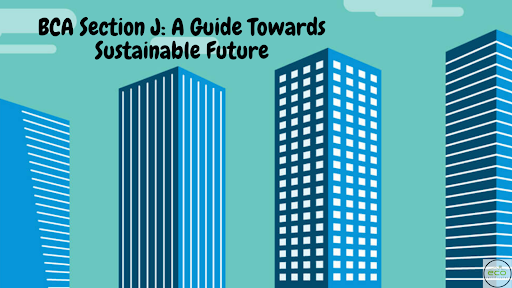Over the years, efficient energy utilisation has become a prominent issue globally due to the alarming global warming concerns. There is currently a crusade to turn toward energy-efficient products, methods, technologies and design, commercial buildings included.
To support and promote energy-efficient commercial buildings the Australian Government introduced BCA Section J.
The commercial building sector in Australia contributes to around 25% of overall electricity utilisation and 10% of total carbon emissions.
Table of Contents
BCA Section J Background
With BCA Section J of the Building Code of Australia (BCA), commercial buildings (non-residential buildings belonging to classes 3-10) need to fulfil and comply with minimum levels of energy efficiency.
BCA Section J Compliance applies to all new commercial developments within these classes and all new extensions, renovations or refurbishments of existing commercial buildings in the same classes.
However, there is certain discretion as to how much or which specific compliance is necessary with Section J in some extension or refurbishment commercial projects.
Section J is primarily associated with the operational building energy efficiency but takes no consideration of water sensitive design aspects, waste recycling, construction material selection, indoor environment quality or the construction impact on the natural environment.
It encompasses a definite set of standards/compliance to be achieved for:
- Building Insulation
- Glazing performance
- Commercial building Sealing
- Air-conditioning and ventilation (HVAC) energy performance
- Artificial lighting and power performance
- Access for maintenance
Section J compliance report can be prepared either by DtS solution or JV3 modelling.
Also Read: Ace BASIX Certification Like A Pro: An Insightful Guide
When Should You Complete The BCA Section J Report?
It is recommended that you consider preparing for Section J compliance early in the design development phase of the commercial project.
- Ideally, the energy efficiency considerations should be started after window schedules, and wall types have been nominated.
- During this phase, other crucial building elements, including window locations, size, glazing, door orientations, building fabric systems, artificial lighting systems and mechanical heating, cooling, airflow and ventilation features, are conceptualised and can be altered if required.
- Considering Section J compliance towards the end of the design phase, unnecessary expenses may arise for design modification or upgrading the features of any of the components mentioned above to achieve compliance.
- For intricate designs and concepts that can’t achieve Section J compliance with the DtS method, JV3 modelling is an alternative option. JV3 solution uses a DtS building for energy efficiency comparison to achieve compliance and demonstrate that the commercial development still meets the required BCA building energy efficiency performance standards.
Benefits Of Constructing An Energy-Efficient Building
Benefits for project owners, building owners and managers from an energy-efficient building:
- Increases the real-estate asset value by reducing operational and maintenance of the building
- Attract more high-value tenants more quickly and minimise tenant turnover
- Deliver higher value rents
- Help accomplish targets for corporate, social and environmental responsibility
Tenants in commercial energy-efficient buildings can benefit by:
- Save money on monthly energy and utility bills
- Reduced exposure to fluctuating energy prices
- A healthier work environment translates into Increased employee productivity
Building Design Consideration to Comply With BCA Section J
Optimise The Building Envelope
Building envelope might not be the initial design element that comes to mind while planning about energy efficiency, but it plays a pivotal role.
- Artificial heating and cooling account for 27% of the power usage in commercial buildings. A building envelope influences how efficiently that heating and cooling energy is utilised.
- If the building envelope has sloppy insulation or isn’t climate/location optimised, the HVAC system won’t be able to function at peak efficiency.
- It is essential to utilise high-quality and sustainable insulation materials, including cellulose, cotton, or even sheep’s wool, to comply with BCA Section J requirements.
Installing High-Efficiency HVAC System
Along with a superior building envelope, a high-efficiency HVAC system is equally vital for improving artificial heating and cooling efficiency. Typically, larger buildings attract higher artificial heating and cooling costs. However, introducing energy efficiency-focused design methods can be beneficial.
- Design aspects such as demand-controlled ventilation or central vs. room-based heating need to be considered.
- Additionally, different HVAC systems have a specific energy efficiency ot help estimate the best option for the building.
- Installing ceiling fans helps improved air circulation and decreases strain on the HVAC system.
Maximise The Use Of Natural Light
One of the secrets to success for many top-quality energy-efficient buildings is the optimal use of sunlight during the daytime.
- Natural light doesn’t add up to the energy bills. Therefore, designing the orientation of commercial buildings and windows to maximise the use of natural light can significantly reduce energy costs.
- Whenever possible, the building needs to be oriented in a way that spaces requiring the most light for the longest duration are facing south, where natural light is available for the longest part of the day time. JV3 modelling enablers greater design flexibility to attain energy efficiency.
- Large, well-angled windows, along with the correct orientation of ceilings and walls, can help to spread the natural light around even more.
- Specially treated windows (thermochromic or electrochromic) and glazing (tinted or specifically glazed) respond to light and exterior conditions and optimise energy efficiency.
- Integrating solar panels is another way to reduce dependency on renewable energy sources.
Moving Towards A Sustainable Future
Using energy efficiently saves business expenses and building operational costs while helping the planet along the way.
With the correct building consultant, designing a building for energy efficiency can be easy. The design concepts are just the fundamental elements of a building design. With an open-minded perspective and an energy-efficiency aim, the upcoming commercial projects can set the industry gold standard for sustainable power usage.

